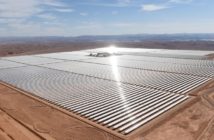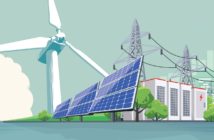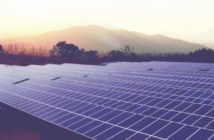Green Prophet
Joseph Mayton
Training, teaching and researching the wind: Al Akhawayn University in Ifrane gets Africa’s first wind-hydrogen system.

Morocco’s renewable energy push received yet another boost last week with the installation of the first-ever wind-hydrogen system in Africa. Activists and industry experts are excited that the government is pushing forward on its continued promises to create clean energy for the North African country which aims to be 42 percent reliant on renewables by 2020. ”This is a great initiative and one that we all believe will be a huge success as it can help build on the issues of losing potential energy from renewable sources,” environmental technology consultant Ibrahim bin Abdullah, who has worked with the Moroccangovernment on wind and solar projects in recent years, told Green Prophet.
The installation by Sahara Wind at Al Akhawayn University, about 70 kilometers from Fes, consists of a wind farm with three turbines and is reportedly capable of generating green energy across the campus. The university said that the inaugural project aims to examine the issue of wind intermittency that leads to an excess power generation that could potentially be resolved.
The university also is aiming to research how excess energy can be stored. It noted that throughout the intial phase, they have witnessed periods when the turbines are forced to be turned off because they are generating too much power.
Abdullah said that researchers are hopeful that the project can bring about groundbreaking answers to what he described as “the only problem facing the clean energy sector.”
He added that “if we can figure out a way to maintain energy levels, even store such energy properly, then there is no reason to think that clean energy and renewables cannot be the future for Morocco and the rest of the world.”
According to reports, Pure Energy Centre has been commissioned specifically for that purpose, to design and install a hydrogen energy storage system.
“The stored energy could then be reused at a later time, when no wind generation was available, through different hydrogen applications,” RenewableEnergyFocus.com reported.
“We feel that coupling wind and hydrogen will play an important role in Africa’s future through a variety of applications involving the continent’s main industries,” said Khalid Benhamou of Sahara Wind in the same report discussing the potential for the new wind-hydrogen system.
“The applications are indeed numerous: they range from powering telecommunications networks and green mobility – to be developed in partnership with local telecom and automotive industries – and extend to water utilities and mine processing industries,” continued Benhamou. “The latter would use hydrogen and other electrolysis byproducts such as chlorine as feedstock.”
The government believes that alternative energy can be the future of the country and has set ambitious goals to have over 20 percent of its energy sources from renewables by the end of the decade. The question now, for environment experts like Abdullah and others in the country, is how to reach those demands.
“This could very well be one of the most important projects yet for Morocco, so let’s keep a close eye on the progress that can be made,” he added.
.






